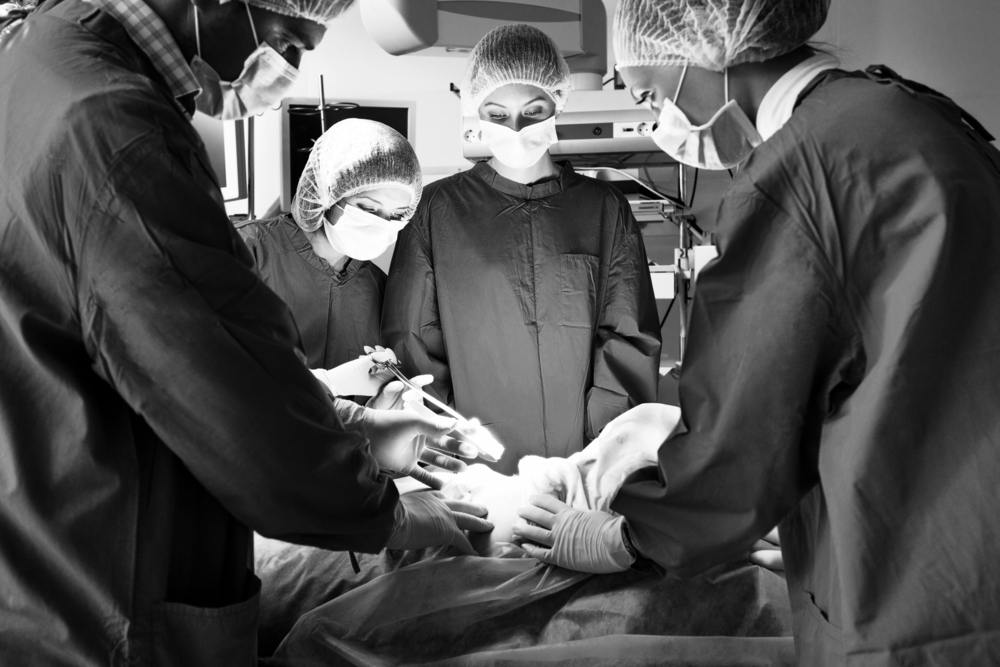If you’re one of the millions of people who suffer from nasal obstruction, chronic nosebleeds, and pain, then you may be a good candidate for septoplasty.
What Is a Septoplasty?
This surgical procedure fixes deviated nasal septum, a condition which occurs when the bone and cartilage that divide the nasal cavity is off-center.
A deviated septum can trigger trouble breathing through the nose and cause dry mouth, as those with the condition tend to breath through their mouths more to compensate for the reduced airflow reaching their lungs. It may also be responsible for excessive congestion, facial pain, blocked sinus drainage, repeated sinusitis, recurring nosebleeds (epistaxis), headaches, and even sleep apnea.
Deviated septums are most often caused by one of two common factors: either a change in the shape of the nasal tissues and cartilage during the birthing process, or nasal trauma, such as an injury to the nose.
Ideal Candidates
Interestingly, studies show that approximately 80% of the population has a deviated nasal septum, however, not all people with the condition experience side effects that warrant surgery.
Furthermore, not everyone with difficulty breathing and nasal swelling is a good candidate for septoplasty. Other conditions, such as allergies or injury, can also affect the nasal passages and limit airflow.
Doctors typically only recommend septoplasty when most other measures have been exhausted. If you’ve tried everything to reduce the swelling — from prescription nose spray and decongestants to ingesting ibuprofen — yet have only experienced minimal relief, it’s probably time to talk to your doctor about septoplasty. A CT scan is almost always necessary to properly identify a deviated septum.
Septoplasty vs. Turbinectomy
Septoplasty isn’t the only way to treat a deviated septum. Other procedures, such as a turbinectomy (turbinate reduction surgery), are also commonly recommended.
The primary difference between the two procedures is that septoplasty corrects the deformity within the nasal cavity, while a turbinectomy removes the enlarged inferior turbinate from the nose.
In some cases — for example, if the patient experiences extreme nasal obstruction, septal perforation, and a deviated septum at the same time — doctors may recommend a turbinectomy in conjunction with septoplasty and other types of septum surgery.
How Septoplasty Is Done
According to the American Rhinologic Society, septoplasty is typically performed under general anesthesia, but there are some cases where local anesthesia is an option. If you have certain conditions — like high blood pressure or diabetes — your doctor may recommend local anesthesia to further reduce the risk of potential complications.
You may want to talk to your doctor beforehand to develop an anesthesia plan that ensures you will experience optimal comfort over the course of your surgery.
Prior to surgery your doctor will make a small incision on the side of the nose in order to access the septum. They will begin the procedure by lifting off the lining of the septal cartilage and bone — the nasal mucosa — in order to perform septal reconstruction and correct the airway obstruction.
Your surgeon will then move the septum into the correct position and eliminate any barriers — like extraneous pieces of bone or cartilage — to provide an open passageway for air. Finally, the mucous membrane will be repositioned.
Generally speaking, a septoplasty procedure will last between 30 and 90 minutes and be performed on an outpatient basis, so it’s more than likely you won’t be required to stay overnight.
As the septal nasal cartilage has some “memory” — the tendency to return to its original position — patients are often required to have splints or packing placed inside the nose during the healing process to provide structural support and help the septum retain its new shape over the long term. However, a recent study found that packing the nose is not absolutely necessary for optimal results, and nasal packing can actually cause nasal and head pain in some patients.
Recovery Time and Postoperative Care
Patients typically report that the first 48 hours of recovery following septoplasty are the hardest. Over this period you’re likely to experience pain, nasal drainage, stiffness, and fatigue. However, most doctors prescribe oral pain medication in order to minimize any discomfort for the first two days.
After the initial 48 hours, over-the-counter analgesics like Tylenol are recommended to manage any potential recurring pain. Doctors suggest avoiding blood thinners, such as aspirin or ibuprofen, in order to limit the risk of excessive bleeding.
Within the first week you should experience significant improvements to the stiffness and swelling. However, if you still experience drainage and nosebleeds after one week, your doctor may recommend using saline spray or nasal irrigation for temporary relief.
Over the first two weeks of recovery, patients are typically required to limit their physical activities, stress, and anything else that could cause a spike in their blood pressure or heart rate, as these can increase the risk of bleeding. It’s also important that patients refrain from consuming alcohol, as it can thin the blood during recovery.
After three weeks, septoplasty patients should be able to return to most of their usual activities. By this time, you’ll be able to exercise and swim so long as there are no signs of excessive bleeding, bruising or swelling. Nevertheless, doctors often limit certain activities — like diving and facial tanning — for several months following the procedure.
You’ll also be required to visit your doctor at various intervals following surgery to ensure proper healing continues throughout the entire process.
The results of septoplasty will vary from patient to patient, but successful surgeries should eliminate breathing problems, chronic sinus infections, and facial pain while significantly improving nasal airflow.
Although the recovery time frame will vary significantly from patient to patient, you should feel back to normal and able to breathe easier within a month.
Septoplasty Risks
Septoplasty is a relatively low-risk surgery, but, while rare, complications can occur.
The primary risk associated with this type of nasal surgery is bleeding. Some bleeding, especially in the early stages of recovery, is expected. However, in rare instances the procedure can lead to excessive bleeding, causing severe complications. You should contact your doctor immediately if you believe you’re experiencing abnormal nasal bleeding post-septoplasty.
Other risks associated with the procedure include vomiting and a decreased sense of smell.
The small incision at the side of the nose can also cause permanent scarring, however this scarring is usually not very prominent. Additionally, there are rare occurrences of septum perforation — a hole that forms in the septum.
Certain cosmetic issues are possible as well. These include changes in the shape or color of a nose.
As with any procedure, there are complications that can occur as a result of general anesthesia, including confusion, pneumonia, stroke, and even heart attack. Make sure to talk to your doctor about all of your existing health conditions and concerns before agreeing to this type of anesthesia.
Septoplasty Cost
Insurance will cover the cost of septoplasty when it is medically necessary. Without insurance a septoplasty will cost between $8,000 – $10,000.
Septoplasty Plus Rhinoplasty: Septorhinoplasty
If you are particularly concerned about the cosmetic risks associated with septoplasty, or if you’re interested in altering the shape and appearance of your nose while helping to address your breathing problems, cosmetic surgeons often recommend combining septoplasty with cosmetic rhinoplasty in a procedure known as septorhinoplasty.
Some plastic surgeons have the training to perform both rhinoplasty and deviated septum surgery simultaneously, which can significantly reduce your recovery time when compared to having two separate surgeries.
There are also some situations where your ENT will recommend having septoplasty and rhinoplasty performed together in order to salvage the septal cartilage to add structural support during the nose reshaping process.
Septoplasty surgery alone is often covered by insurance as it’s deemed medically necessary, but it’s important to note that insurance usually doesn’t cover rhinoplasty.
If you’re interested in having a septorhinoplasty procedure following an accident or injury, you may be able to make a case to your insurance provider to cover both surgeries. The right plastic surgeon might help provide you with a compelling argument to offer your insurance company.









